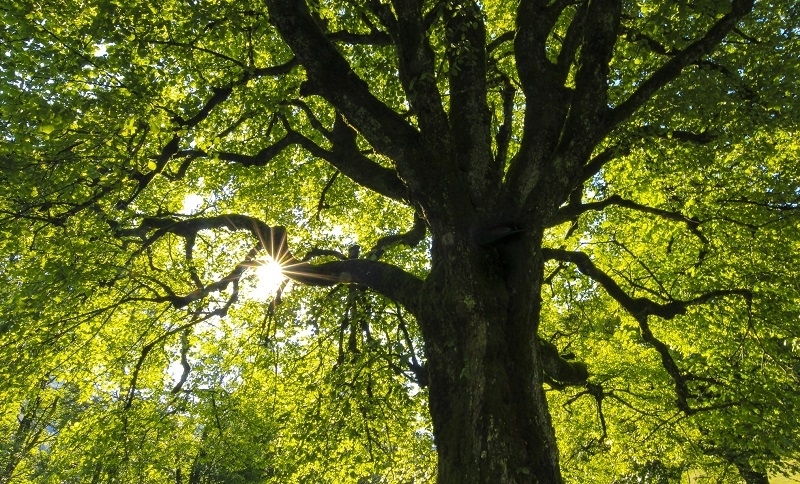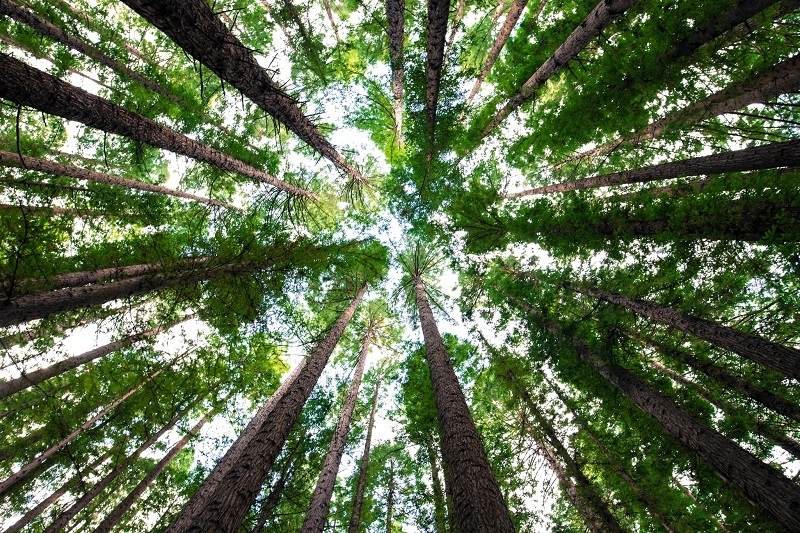How trees grow – From seed to snag
Published: 01/06/20 By: Mike Bekin
Trees, much like the supplies of oxygen they generate, have been taken for granted for hundreds of years. They provide us with so much and are lifeforms with unique biologies that generate the natural magic of photosynthesis. But whilst we might see them and utilise their products every day, how do trees grow and develop? Let’s start at the literal root of the question.
The seed
As the old saying goes – even the largest oak tree came from a single acorn. Seeds, however, will only sprout if they are given the right conditions to do so.
If it finds these conditions, the first root will break through the seed and anchor it to the soil. Once this happens, the shoot will push out through the soil and the real magic starts to take shape.
The roots
A tree begins life as a seedling that eventually blossoms into a stem. Within a couple of months, that stem will begin taking the form of a tree, embedding its roots further into the ground and drawing nutrients from the soil to help in its journey towards more sunlight – its source of energy. At this point, the tree is referred to as a “seedling” and this is the period when it’s at greatest risk of being damaged.
Of course, as trees (like everything else) originally came from the sea, they require water to function. The roots are their way of collecting water via millions of tiny root hairs that spring from the tips of the roots to find moisture and minerals.
This moisture and nutrition is then sent to the rest of the tree as it begins to grow and take shape. Once it has grown to over 3 feet tall, the tree ceases to be a seedling and becomes a “Sapling,” which is when the flexible trunk starts to take shape.
The trunk
The real meat of the tree, so to speak, lies in the trunk, which is not only critical for supporting limbs but as a delivery system for nutrition and moisture between the roots and the leaves as it grows wider and taller.
A tree’s trunk will grow to search out sunlight, expanding upwards towards the sun. This is because it requires sunlight in order to perform the natural miracle of photosynthesis, which converts water, light, and carbon dioxide (drawn through the leaves) to create food for the tree so that it can continue to grow upwards.
This is why trees grow taller; they are competing with other trees for sunlight – for example in a wood or forest. It’s truly remarkable how adaptable these natural wonders really are and that’s before we even broach exactly what trees can be used for once they have grown and been felled.
A tree’s girth serves only to give it more structural strength as it continues to stretch upwards. Diameter growth happens via cell divisions that happen just underneath the outer layer of bark – which exists to protect the tree from insects and environmental damage. A new layer of cells is formed every year, which is why you can tell how old a tree is by counting its rings.

The leaves and branches
The branches and leaves are the final pieces of the puzzle, expanding out from the trunk to reach up into the sunlight and collect carbon dioxide and sunlight.
Once the branches have reached their peak, bud formation takes place, with the tree canopy springing forth from there. The bud is protected, which allows plants to continue to grow and create new leaves and flowers even in adverse conditions.
The life cycle
Once a tree begins producing flowers or fruit it becomes mature and can survive for hundreds or even thousands of years depending on the species and the environment. When it passes beyond maturity, however, it becomes an ancient tree and can no longer produce fruits or flowers.
Eventually, it will begin to decay and become a “Snag,” but even then it’s still of use to the environment, with dead wood providing a home for insects and fungi.
So, even in death, trees are an incredibly important part of our natural world and will continue to be so.
Trees were here before us and they will be here after us as long as we source them responsibly and continue to give them the respect they truly deserve.
Tags: Environmental, Trees
Categories: Insights
